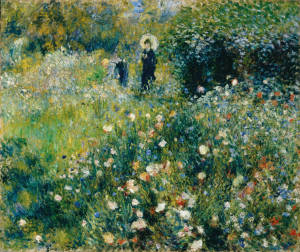 Many dismiss science fiction as escapist literature. Others may not even recognize that they are reading or watching science fiction. From its early form to its contemporary form, writers of the genre have created powerful metaphor of great scope that has examined our greatest creations and deepest choices. Science fiction is subversive literature that illuminates our history and our very humanity. It does this by examining our interaction with “the other”—the unfamiliar and unknown. A scientific discovery. An environmental disaster. A calamity related to climate change. From Shelley’s promethean Frankenstein to Atwood’s environmental dystopia Oryx and Crake, science fiction has co-evolved with its culture, subverting the status quo by pointing to choice and consequence. The science in science fiction also includes the natural sciences such as geography, biology, geology, limnology, ecology, forestry, virology, climatology, etc. Eco-fiction, climate fiction or cli-fi, eco-action, eco-punk—all SF sub-genres—involve science (which includes the study of natural phenomena) as its “main character”. This is indisputable. And it is what I have been writing since the 90s.
Many dismiss science fiction as escapist literature. Others may not even recognize that they are reading or watching science fiction. From its early form to its contemporary form, writers of the genre have created powerful metaphor of great scope that has examined our greatest creations and deepest choices. Science fiction is subversive literature that illuminates our history and our very humanity. It does this by examining our interaction with “the other”—the unfamiliar and unknown. A scientific discovery. An environmental disaster. A calamity related to climate change. From Shelley’s promethean Frankenstein to Atwood’s environmental dystopia Oryx and Crake, science fiction has co-evolved with its culture, subverting the status quo by pointing to choice and consequence. The science in science fiction also includes the natural sciences such as geography, biology, geology, limnology, ecology, forestry, virology, climatology, etc. Eco-fiction, climate fiction or cli-fi, eco-action, eco-punk—all SF sub-genres—involve science (which includes the study of natural phenomena) as its “main character”. This is indisputable. And it is what I have been writing since the 90s.
Unfortunately, the media, particularly those involved in the film and TV industry, often find the need to confine SF to the areas of science that are involved with only technology, space and places far far away. This is “boxing” science fiction into one small aspect of the larger genre. SF isn’t just about spaceships, aliens, mad-scientists and monsters, which, is how much of the media portrays it. The literature of science fiction includes some of the very best socio-political writing there is on the planet. Writing that includes Orwell’s “Nineteen Eighty Four”, Huxley’s “Brave New World”, Bradbury’s “Fahrenheit 451″, Heinlein’s “Stranger in a Strange Land” Asimov’s “I, Robot”, John Wyndham’s “The Chrysalids” and Robert J. Sawyer’s “Calculating God”.
The writings of climate fiction, eco-fiction, environmental SF, and so on had been around a long time. In some ways the media—and the world—is just catching up with our artists and repackaging their works. Think of Orwell’s “Big Brother” vision popularized in the media decades later or Huxley’s “Brave New World” of cloning and eugenics coming of age just now. The writing comes first; its incorporation into pop-culture and definition comes second.
Fiction of the past two decades has shifted to reflect our emerging concerns with technology, corporate deceit, overpopulation and global environmental calamity. Environmental fiction is growing in prominence because it needs to. Writers from around the world are responding to this global need and are leading the wave of change.
I’ve noticed in the science fiction writing classes I teach at university and college, that eco-fiction represents an ever-growing proportion of what students are writing. This confirms for me that environmental themes have re-entered the cultural zeitgeist. This is wonderful to see because it is through story that a culture learns about itself. And changes.
The plein-air art form of the Impressionists was first coined in a pejorative satirical review of the art form; the Impressionists had themselves refused to name their own movement. Despite the initial hostile reception by the pubic, this art movement captured exactly what the world was ready for and needed at a great time of change and experimentation. Impressionism showed a new way of seeing the world, through light, embracing modernism and a shift in worldview. Great writing does the same thing and in the end surpasses its own “genre”.
 Nina Munteanu is a Canadian ecologist and internationally published novelist of science fiction and fantasy. In addition to eight published novels, Nina has written award-nominated short stories, articles and non-fiction books, which have been translated into several languages throughout the world. She currently teaches writing at The University of Toronto and George Brown
Nina Munteanu is a Canadian ecologist and internationally published novelist of science fiction and fantasy. In addition to eight published novels, Nina has written award-nominated short stories, articles and non-fiction books, which have been translated into several languages throughout the world. She currently teaches writing at The University of Toronto and George Brown
Recent Comments